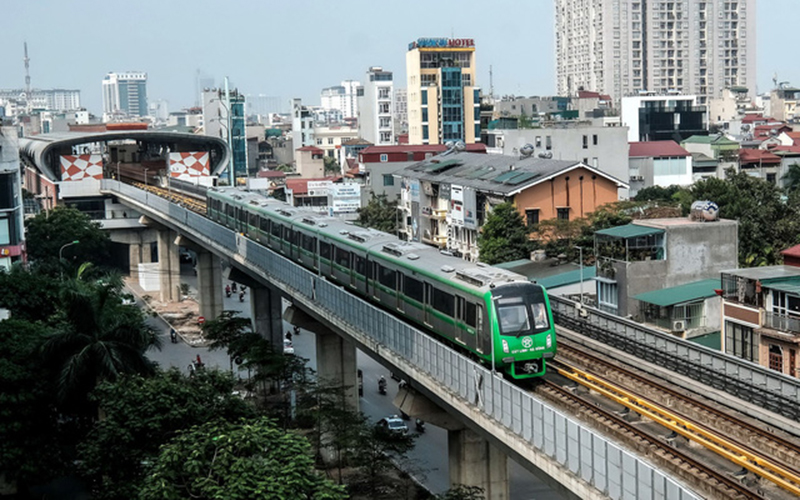Why disbursements of public investment in Vietnam are slow?
The sluggish disbursement of public investment is attributable to the combination of three major factors.
According to the Taking Stock report by the World Bank, while the government was able to disburse about 70% of its investment program during 2011–14, this rate declined to about 55% in 2017 and 2018, and was only equal to 49% during the first nine months of 2019. This decline is explained by the combination of three major factors:
| A section of the Cat Linh - Ha Dong urban railway in Hanoi. |
First, as part of the consolidated fiscal policy initiated in 2016, the authorities have set strict borrowing ceilings with the aim of reducing the debt-to-GDP ratio to more sustainable levels. As a result, the execution rate has been much lower for projects financed by borrowing than projects financed by domestic revenue. During the first nine months of 2019, only 18.8 percent of externally funded projects were executed, while the corresponding figure for domestically funded projects was over 50 percent.
Second, the introduction of the new Public Investment Law (PIL) 2014 (in effect from January 2015) was accompanied by the first-ever medium-term investment plan (MTIP). While useful, the implementation of this plan was more complex than envisioned, leading to unexpected delays in the approval of investment
projects, as their inclusion in the MTIP became mandatory for receiving funds. The approved MTIP (which was a top-down decision process) also led to a mismatch between the medium-term supply and the demand for investment capital requested by ministries on a yearly basis.
Third, the substantial and increasing delays generated by the procedures to allocate and transfer funds also contributed to the decline in disbursements. The approval process starts with the National Assembly and then goes to the Office of the Prime Minister, the Ministry of Planning and Investment, and, ultimately, to implementing ministries and agencies.
The new procedures incorporated in the Construction Law (2014) are also viewed as another important source of delay. As a result, in 2019, some key spending ministries received their funds only in June.
The government amended the PIL 2014 to address the above factors. The amended PIL, promulgated in June 2019, introduces some flexibility to the MTIP by allowing an annual update mechanism. It also introduces a mechanism to ensure the continuity of project preparation between consecutive MTIPs, by allowing each MTIP to commit up to 20% above the total estimated investment cost for projects implemented in the following MTIP.
Additional important changes include the delegation of fund review authority from the Ministry of Planning and Investment and Ministry of Finance to provinces for projects using provincial funds, and the possibility for spending agencies to allocate funds among projects to facilitate their implementation.











